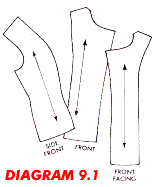
MONSTROSITIES
Anne Shaw
This essay is most easily viewed via downloadable [pdf] which will allow us to better convey the formatting of the piece. So download it! Download the free Adobe Reader software if you need it (you'll need some sort of pdf viewer, but you're, like, smart and stuff, so you have that already we imagine).
__
Monstrosities began with a visit to the Mütter Museum in Philadelphia. The Museum’s collection of medical anomalies contains everything from the liver of the “Siamese” twins Cheng and Eng to the skeleton of a man whose muscle slowly and painfully transformed itself to bone. Amid the jars of fetuses, I was struck by the sheer variety, the mind-boggling range of possible deformity. It is as though human development can, and will, go wrong at every possible juncture.
To me, the range of such mutations points to the inevitability of genetic mutation and, disturbingly, toward a purposeless cosmic order. Perhaps it is because anomalies expose the very seams of our humanity that we distance ourselves from them linguistically and physically. Under the gaze of those without (visible) anomaly, those bearing difference become monsters, curiosities, objects behind glass. Yet each specimen was once a human being.
How does a collection come by the skeleton of an 18th Century child who died of disease, or the crushed pelvis of a "dwarf" who died in childbirth? One need not spend long looking at, or reading about, medical anomalies to get a sense of the nefarious history that lies behind them.
Through this piece, I have attempted to reintroduce the voices, wills, and narratives of people who were—invariably, it seems—bought and dissected, silenced and re- or un-named. Composed entirely of excerpts from source texts, the poem is itself sort of monster. As I collected texts, cut and sutured them together, the work expanded far beyond its original scope. I hope it may serve to illuminate not only the past but our present relations as well.